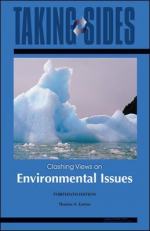|
This section contains 1,218 words (approx. 5 pages at 300 words per page) |

|
The bottom of streams, rivers, lakes, ponds, mudflats, and even oceans is made up of materials that were deposited there by the natural forces of currents (a constant flow of water in a predominant direction), gravity (attraction between two masses), and flows of incoming streams and rivers. This material, consisting of soil, pebbles, silt, clay and other material, is known as sediment. Sedimentation (the deposit of sediments) becomes a problem if it is contaminated by toxic (poisonous) chemicals or harmful microorganisms. Just as soil and other material is carried to the bottom of water bodies, harmful chemicals or organisms can collect on the sediments.
The problem of sediment contamination is increasing in many areas throughout the world. The United States Environmental Protection Agency (EPA) conducted a survey across the country in 1998 in which they found hundreds of contaminated sites. Many of these were located in coastal...
|
This section contains 1,218 words (approx. 5 pages at 300 words per page) |

|




